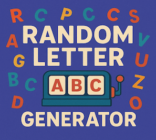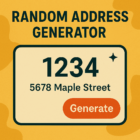Welcome to your go-to guide filled with engaging 3rd grade writing prompts designed to spark curiosity, build language skills, and grow confidence. These creative writing prompts are practical tools you can use in the school day, at home, or during journaling time to help students and kids express feelings, practice language, and tell stories that matter to them.
Journaling and storytelling—two simple habits—let children name emotions, try out new ideas, and shape their inner world through words. Use the sections below to build daily warm-ups, weekly challenges, or classroom routines that make writing a joyful habit.
Writing can feel tricky for many 3rd graders as they begin exploring their voice and discovering how words can shape ideas and feelings. At this moment, carefully chosen 3rd grade writing prompts are especially valuable: they build creativity, strengthen language skills, and boost confidence by giving children clear, inviting places to begin.
Journaling and storytelling are two powerful habits this age group benefits from most. A short daily journal helps students name emotions and reflect on small moments (for example, “Write about one thing that made you smile today”), while storytelling encourages imagination and narrative thinking. Together these practices let students express feelings and try out new roles, strengthening both emotional literacy and written language.
This section covers why prompts matter and how to use them—quick ideas for teachers and parents to try immediately. Try a 5-minute feelings journal today: set a timer, ask your child to write one sentence about their mood and one sentence about something they would like to happen tomorrow, then praise effort and curiosity.
Why Creativity Matters in 3rd Grade Writing
The third grade is often a turning point in a child’s writing journey — a shift from “learning to write” toward “writing to think.” At this stage, prompts and creative writing activities move beyond handwriting and spelling: they become tools for reasoning, reflection, and idea-building. Encouraging imagination in 3rd grade supports language development, strengthens writing skills, and helps students become more confident communicators.
Creative writing also fosters empathy and emotional intelligence. When kids try on different characters or perspectives, they practice seeing the world through another person’s eyes. For example, a prompt like “Write as your classmate who forgot their pet’s birthday — how would they feel and what would they say?” builds both narrative skill and social understanding. These experiences help students name emotions, organize thoughts, and connect feelings to language.

Practical takeaway for teachers and parents: make creativity regular and intentional. Try a weekly empathy prompt during morning meeting, or assign a short “role swap” story once a month. These small, consistent practices give students repeated chances to stretch imagination, practice perspective-taking, and build the confidence that turns young writers into thoughtful thinkers.
Understanding Writing Prompts Beyond the Basics
Writing prompts are more than simple topics — they are idea starters or thought triggers that jumpstart thinking and help children turn an idea into a full piece of writing. For 3rd graders, well-designed prompts guide imagination, support language development, and teach kids how to approach writing with purpose. Below are three main types you can use in the classroom or at home, with quick examples and simple scaffolds.
1) Reflective prompts – for personal growth and emotions.
Reflective prompts invite students to think inward and name feelings, boosting emotional literacy and self-awareness. Classroom example: “Write about a time you and a friend disagreed — how did you feel and what did you do?” Home example: a nightly journal entry that asks, “What made you proud today?” Scaffolds: provide a short word bank (proud, upset, surprised) and sentence starters such as “I felt ___ when…” or “One thing I learned was…” These prompts help children organize feelings into words and practice thoughtful reflection.
2) Creative storytelling prompts – for narrative imagination.
Storytelling prompts push kids to invent characters, settings, and problems so they practice plot and descriptive language. Classroom example: “Your pet learned to talk for one day — tell the story of what happened.” Home idea: a weekend story challenge where a child draws a picture and writes the first paragraph. Scaffolds: story maps (Who? Where? What happened?) and sensory-detail checklists (sight, sound, smell) help students build richer scenes. These prompts develop narrative skills and the ability to sustain a story arc.
3) Exploratory prompts – for cross-curricular or real-world thinking.
Exploratory prompts connect writing to subjects like science, social studies, or math and encourage kids to apply curiosity and logic. Example: after a science lesson on gravity, ask, “Describe a day without gravity — what would change at school and at home?” Or combine with math: “Design a new playground; explain how you solved the space and budget problem.” Scaffolds: picture prompts, simple research cards, or a 3-bullet planning sheet (idea, why it matters, three details). These prompts teach students to use writing as a tool for inquiry and explanation.

| Type of Prompt | Purpose | Example |
|---|---|---|
| Reflective | Encourages emotional exploration | Write about a time you felt proud. |
| Storytelling | Stimulates creative narratives | Create a story about a dragon who loves to cook. |
| Exploratory | Links writing to real-world understanding | Describe how you would solve an environmental problem. |
Differentiation tips: offer shorter sentence starters or a picture prompt for emerging writers, and challenge advanced students with an extra constraint (write from a different character’s point of view or add a surprising twist). Small supports like word banks, graphic organizers, or partner brainstorming keep prompts accessible while preserving the creative challenge.
The Science of Writing Prompts and the Creative Brain
Well-chosen writing prompts do more than inspire stories — they activate imagination, language systems, and problem-solving networks in the developing brain. Educational research and classroom evidence suggest that short, focused prompts engage cognitive processes that help students generate ideas, organize thoughts, and make connections across subjects. In other words, prompts are practical triggers for creative thinking and learning.
Prompts often encourage divergent thinking — the ability to produce multiple possible answers or perspectives. A single open-ended prompt can lead children down many paths: different characters, settings, solutions, or endings. Try the example prompt “Describe a day without gravity” — it blends science, logic, and creativity as students imagine how school, play, and everyday life would change. That mix builds both language skills and cognitive flexibility, training kids to hold several possibilities in mind at once.
While specific neuroscientific claims should be cited when used in formal reports, classroom experience supports the idea that regular practice with prompts improves idea-generation and narrative planning. Teacher tip: pair a science-themed prompt with a short demonstration or image (a video of objects floating, a picture of astronauts) to anchor ideas and spark richer responses. Frequency idea: aim for quick 5-minute brain-building prompts most mornings and a longer prompt once a week to deepen thinking and story structure.
Practical Ways to Use 3rd Grade Writing Prompts
Integrating practical writing prompts into the school day can quickly boost focus, creativity, and language skills. These engaging writing activities work equally well in classrooms and at home, and many encourage collaboration in writing. Below are classroom-ready formats, each with time suggestions, materials, and a quick teacher tip.
Morning Warm-Ups: 5-minute quick writes
Time: 5 minutes. Materials: notebook or sticky note and a timer.
Start the day with a short prompt to wake up writing muscles and sharpen attention. Example prompt: “Write one sentence about your favorite place and one sentence about who you would take there.” Differentiation tip: give emerging writers a sentence starter; challenge advanced students to add a surprising detail. Teacher tip: celebrate effort — praise originality over accuracy.
1) Story Engineering Challenges: Visualize the story (who, where, what happened)
Time: 15–20 minutes. Materials: story map (Who? Where? Problem? Solution?) and drawing supplies.
Step-by-step: 1) Show a picture or give a short prompt, 2) students fill the story map, 3) write a paragraph. Sample prompt: “Your best friend turned into a superhero for a day — describe who they are, where they go, and what happens.” Assessment tip: use a simple 3-point rubric (Beginning, Problem, Resolution) to keep feedback focused on structure and creativity.
2) Weekend Wonder Notes: Family storytelling that includes parents’ responses
Time: flexible (5–20 minutes). Materials: a notebook sent home or shared digital doc.
Template for families: child writes a short prompt answer, a parent writes one encouraging sentence back. Example family prompt: “Describe a funny thing that happened this week.” Teacher/parent tip: encourage parents to ask a follow-up question (opinions count!) to model conversation and add authenticity.
3) Collaborative Story Labs: Small-group chain stories that teach continuity
Time: 20–30 minutes. Materials: paper chain or shared slide deck.
How it works: students sit in small groups and take turns adding a paragraph or sentence to a shared story. Prompt starter: “An animal found a mysterious door in the woods…” Differentiation: give each student a role (starter, detailer, problem-solver) so all can contribute. Skill focus: continuity, listening, and editing.
4) Digital Story Sparks: Use AI tools or image prompts for visual storytelling
Time: 15–30 minutes. Materials: image cards or teacher-reviewed AI-generated prompt list.
Use: show an image or a short, teacher-vetted AI prompt to inspire a story. Example: display a strange map and ask students to write where it leads and who lives there. Privacy note: vet any AI tools for age-appropriateness and student data safety before use. Tip: pair the prompt with a quick drawing task to support writers who think visually.

Quick teacher tips for all activities: 1) Keep expectations simple and praise risk-taking, 2) rotate themes weekly to avoid boredom (a list of themes helps), and 3) offer word banks or picture prompts when kids don’t know how to start. These small supports keep writing fun and build lasting skills.
Themed Prompts That Spark Every Kind of Imagination
Themed writing prompts are a great way to organize practice, but grouping prompts by the thinking skill they develop makes them even more powerful. Below is a short thinking-skill table you can use to rotate weekly: pick one skill per week to focus instruction, quick writes, or morning warm-ups.
| Thinking Skill | Writing Goal | Example Prompt |
|---|---|---|
| Emotion Explorer | Express feelings and build empathy | “Write about a time you felt invisible — how did you change it?” |
| Imagination Builder | Strengthen creative thinking | “If you could paint the sky any color, what would it be?” |
| Problem Solver | Combine logic and storytelling | “Your robot forgot your homework — what will you do?” |
| World Maker | Develop setting and sensory detail | “Design a city where animals make the rules.” |
| Time Traveler | Blend history and fiction | “What would you tell your future self in 2050?” |
How to use this list in class or at home: choose one thinking skill per week and offer 3–5 short prompts or variations. For World Maker, add a sensory challenge: ask students to include smells, sounds, and textures (e.g., “Describe the market where animals trade food—what does it smell like?”). For Problem Solver, require a clear beginning, problem, and resolution to strengthen the 3-step story arc.
Quick ideas to keep kids engaged: turn Imagination Builder into a drawing-plus-story activity, make Emotion Explorer a private journal entry followed by a voluntary share, and use Time Traveler as a chance to connect to a history lesson or a family story about vacation or life “back then.” Rotate themes and thinking skills to avoid repetition; a weekly plan helps students anticipate and prepare creative responses.

Merging AI and Human Creativity
The thoughtful use of AI in education can help teachers and families generate fresh writing ideas while respecting each child’s voice. Used well, AI becomes a time-saving assistant that suggests age-appropriate prompts, highlights underused creative categories, and surfaces prompt variations by interest or reading level — but it should always sit next to, not replace, human judgment.
1) Teachers tailor prompts by student interest or reading level.
Workflow example: a teacher inputs a student’s interest (e.g., animals) and reading level, the tool generates three leveled prompts, and the teacher selects and tweaks the best one for class. This makes it quick to offer differentiated, relevant prompts that meet students where they are while preserving the teacher’s role as the final curator.
2) Parents get home-friendly writing suggestions.
AI can also help parents find simple, engaging prompts to use at home, matching ideas to a child’s hobbies or recent classroom themes. Remember: “AI sparks the idea; the child builds the story.” Encourage parents to review prompts and add personal touches so writing stays connected to family life and values.
3) AI highlights underused creative categories (e.g., “STEM storytelling”).
One valuable use of AI is surfacing creative categories that aren’t always obvious—like STEM storytelling or cross-cultural story starters—so teachers can broaden their prompt library. Quick caution: always vet generated prompts for age-appropriateness and privacy. Check any tool’s data policies, and maintain pedagogical oversight: teachers should review and adapt AI output before sharing with students.
Turning Writing Into Joyful Habits
Transforming writing from a chore into a source of joy means building small, repeatable routines that resonate with young writers. Establishing these joyful writing practices boosts motivation and helps students see writing as a playful way to explore ideas, feelings, and the world around them.
1) Encourage writing rituals linked to fun: music, art, or play.
Micro-activity: Music Prompt — play a 2–3 minute instrumental clip, then give kids 5 minutes to write what the music made them picture. Materials: short playlist and paper. Tip: vary the music by mood (calm, adventurous, silly) to prompt different tones. This turns writing into a sensory game and lowers the pressure to be “perfect.”
2) Create “Writer’s Corner” spaces in classrooms or homes.
Low-cost idea: a small basket with colorful paper, a few markers, sticky notes, and a prompt jar. Micro-activity: Writer’s Corner Drop — students pull a prompt slip, draw for 3 minutes, then write 2–4 sentences. At home, a shoebox with prompts works well. Encourage a cozy vibe with a lamp, cushions, or favorite stuffed pet to make the place inviting.
3) Reward effort and creativity with story badges or mini showcases.
Quick system: give simple “story badges” for effort, originality, or improvement (printable stickers or digital badges). Micro-activity: Monthly Mini Showcase — pick 2–4 volunteer pieces to share; display them on a small bulletin board or class blog. Keep rewards focused on process (risk-taking, descriptive detail) rather than only on correctness.
4) Integrate peer-sharing circles and “read-aloud” sessions for confidence.
How to run a 10-minute read-aloud circle: 1) Start with a warm-up (one-sentence summary), 2) each child reads 30–60 seconds, 3) peers give one positive comment and one suggestion (optional). Make sharing voluntary and teach kind feedback language first. This builds speaking skills, listening, and social confidence.
Try one ritual for a week (morning music prompts, a Writer’s Corner routine, or a single read-aloud circle) and note what changes: more ideas, longer sentences, or brighter faces. Small, playful habits add up — and they help kids learn that writing can be fun, expressive, and powerful.
Common Challenges and How to Overcome Them
Every young writer faces hurdles: not knowing how to start, fear of making mistakes, short or disconnected pieces, and occasional loss of motivation. As a teacher or parent, your role is to provide supports that make writing safe, predictable, and fun so students can take creative risks and build skills.
Challenge → Smart Solution
- Kids don’t know how to start: Provide picture prompts, a simple word bank, or a two-line starter. Teacher script (30 sec): “Look at this picture. Name three things you see. Pick one and finish this sentence: ‘I notice ___ and that makes me think ___.’”
- Fear of mistakes: Emphasize that “first drafts are free drafts.” Use a quick warm-up where no one edits for 5 minutes. Teacher script (15 sec): “This is our no-fix zone — write freely for five minutes; we’ll polish later.”
- Short or disconnected writing: Teach the 3-step story arc (Beginning, Problem, Resolution) with a one-page story map. Mini lesson (2 minutes): model a 3-sentence example, then have students fill their own map before writing.
- Loss of motivation: Rotate weekly thinking-skill themes (Emotion Explorer, Imagination Builder) or run collaborative chain stories. Try a quick game: give each group 30 seconds to add one twist to a story — the surprise keeps interest high.
Quick assessment tip: track progress without killing creativity—use a simple three-point rubric focused on effort (tried the prompt), originality (new idea or twist), and continuity (Beginning/Problem/Resolution). Record one note per student each week (strength + one next step) to celebrate growth and guide instruction.
With consistent supports, small scripts, and playful activities, children move from hesitant to confident writers. Persistence, praise, and clear scaffolds help ideas flow and turn short attempts into longer, more connected stories over time.
Conclusion
Growing Imagination, One Story at a Time
Creative writing prompts are far more than classroom exercises — they are gateways to imagination, emotional growth, and stronger language skills. By weaving reflective, storytelling, and exploratory prompts into daily life, you help students and children practice expression, try out ideas, and develop the problem-solving and communication skills that matter in school and in life.
Make writing joyful and pressure-free: try a single short prompt each day for a month and track one simple measure (effort, originality, or length) to watch progress. Encourage journaling, storytelling, and peer sharing so kids would like to write more — small rituals add up to big change.
Every sentence a child writes is a step toward discovering their voice — and shaping their world.











